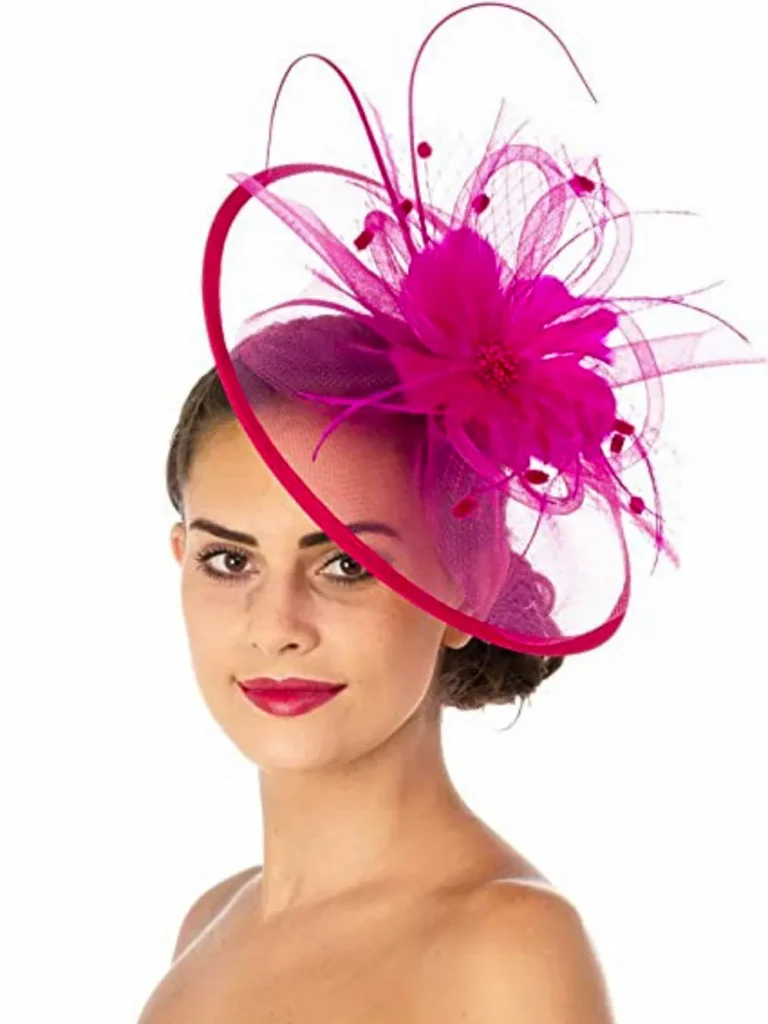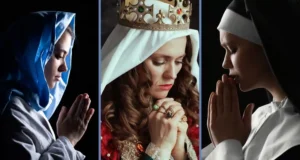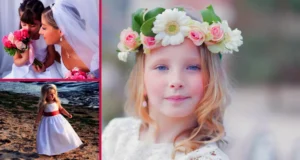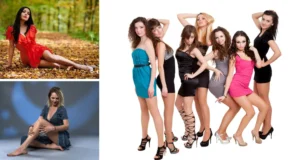Hats and fascinators are headwear styles, but they serve different purposes. Hats provide complete head coverage, while fascinators barely cover the hair or back of the head. Hats suit various formalities, from casual to formal, but fascinators are mainly worn for dressier occasions and events.
Though decorative, hats have additional functions like protection from sun, wind, or rain. Fascinators are purely ornamental, meant solely for adornment and fashion. Hats can shape hair, contain style, or indicate status, but fascinators enhance an outfit’s flair. Many hats have structures like crowns, brims, or stiff materials, whereas fascinators drape or clip on loosely for minimal coverage.
Here we go with the difference between a hat, a fascinator, and much more.
What is the difference between a hat and a fascinator?
The main difference between a hat and a fascinator is that a hat covers the entirety of the head with a large brim, while a fascinator only covers a part of the head and can be worn on the side of the head. Here are some differences between hats and fascinators.
Size and coverage
Hats typically cover more of the head, often the top as well as the sides. Fascinators are smaller, usually covering just the top of the head. They can strap under the chin but often attach to hair clips or hair combs.
Form
Hats tend to have a fuller, rounder shape, while fascinators have a flatter, more drape-like form. Hats are less form-fitting, whereas fascinators are meant to skim the contours of the head.
Attachment
Hats are secured around the head, often with buttons, brims, or headbands. Fascinators attach to hair combs, clips, or hair extensions with no headband or chinstrap. They are meant to be worn on styled hair.
Decor
Hats and fascinators can both come with decorative elements like flowers, feathers, ribbons, brooches, etc. However, fascinators often have lighter, daintier decor that drapes over the sides and edges, while hats have decoration distributed over the entire surface.
Occasion
Hats span from casual sunhats to formal crowns and are worn for a wide range of occasions. Fascinators are usually reserved for semi-formal or formal events like weddings, parties, parades, etc. They are seen as a dressier alternative to most hats.
Era
Certain styles of hats, like newsboy caps, fedoras, etc., are strongly associated with particular eras. On the other hand, Fascinators have no fixed era and remain largely atemporal, though some revivals of vintage styles do occur. They have a more poised and stylish connotation rather than an era-specific one.
Symbolism
While hats can convey a range of symbolic meanings, fascinators are rarely imbued with strong symbolic associations or rank-denoting properties like some royal hats. They are primarily fashion and style accessories.
In summary, the key differences lie in size, form, attachment, decor, occasion, era, and symbolism. But both hats and fascinators can serve as elegant headwear for women. Please let me know if you have any other questions!

What is the purpose of a fascinator?
Fascinators are decorative headpieces, not hats. They provide little or no coverage and protection from the elements. Fascinators are fashion accessories meant solely for decoration and style. They are works of art crafted from lightweight, luxurious fabrics like silk, lace, tulle, and ribbons.
Fascinators complement formal attire and serve as an alternative to hats for special occasions. They add polish and whimsy, allowing women to adorn themselves with a fanciful, flashy headpiece. Fascinators extend an outfit’s silhouette and sparkle. They have become highly collectible as women seek to own many different fascinators to adorn their hair uniquely.
Though minimal, fascinators sometimes help tame hair or subtly adjust the style. However, their primary purpose remains decorative, not practical. Fascinators fill the niche for elaborate hair decor inspired by milliners, royalty, and celebrities. They have become a symbol of feminine elegance, grace, and personal expression.
Fascinators complement traditional hats but provide a dressier option, especially for the evening. They started as a bridal accessories but now adorn all kinds of special events and high-fashion looks. For some, a prized collection of fascinators becomes a means of showcasing their tastes and personal brand. At their core, fascinators are whimsical works of art crafted for the sole purpose of adornment.
In summary, fascinators exist to dazzle the eye, not shield the head, with decoration and dazzle rather than function or form. They have become a key component of feminine fashion and flair.
Can a fascinator be considered a type of hat?
Fascinators and hats are both headwears, but they differ greatly.
Fascinators barely cover the head, leaving most of it exposed. Hats cover the whole head, from the top of the hair to the ears and even the forehead.
Fascinators are made of light, sparkly fabrics like silk and lace. Hats can be made of many materials, including straw, felt, leather, and wool.
Fascinators have a delicate, whimsical style meant purely for decoration. While some hats are quite decorative, too, hats come in all kinds of styles for various purposes like protection from the weather, shaping the hair, or signifying status.
Differences in coverage and construction
Fascinators simply attach loosely to the back of the head and can quickly come off with a tug. Most hats have straps that go under the chin or around the upper neck to keep them secure.
Fascinators originated in the 1800s as a hair accessory for fashionable flair. On the other hand, hat styles have a much longer history, developing over centuries of use.
Differences in origin and intent
Today, fascinators and hats continue to serve different needs. Fascinators dazzle as accent pieces, while hats handle coverage, shade, warmth, and weather resistance.
Some people consider fascinators a type of hat, but there are good reasons to see them separately. They differ substantially in how much head they cover, materials, styles, purposes, attachments, and origins. Although closely related to decorative headwear, fascinators, and hats cater to different fashion whims and needs. They can complement one another but also stand alone.
The distinction may seem small for fashionistas, but the differences between fascinators and hats as headwear are notable for those concerned with form, fit, function, and history.
Why do British wear fascinators?
British women wear fascinators as an important part of their culture and style. Fascinators allow women to dress up for special events like weddings, horse races, and royal parties in an elegant yet whimsical way. They provide decorative head covering without full hats, ideal for British summer fashion and weather.
Though minimal, fascinators exude prestige as high-society headpieces. They are ultra-feminine, fanciful, and prestigious, viewed as a symbol of status, grace, and good breeding. Fascinators also tap into nostalgia for a glamorous past, allowing women to feel like glamorous actresses or royalty for a day.
Princesses Beatrice and Eugenie helped popularize fascinators through their bold, custom styles. When the royal family wears fascinators, it trickles down to mainstream fashion. Celebrities also promote fascinators, but royals cement them as iconic, aspirational accessories.
For British women, wearing a fascinator expresses uniqueness and embraces whimsy along with polish. It allows them to stand out from international styles while still looking put-together. Fascinators perfectly suit Britain’s love of manners, etiquette, and frivolity. They have become emblematic of Britain’s elegance, fancifulness, and flair.
The allure of fascinators of British women
Many British women collect fascinators like treasure, seeing them as fashion statements and particular occasion must-haves. Even those worn mostly for events desiring new styles to match different outfits, hair colors, or moods. Fascinators make women feel special, polished, and on-trend all at once.
In summary, fascinators hold deep meaning for British women as iconic, aspirational, and vibrant accessories. Though originating in Britain, they have transcended national identity to become a crucial part of British fashion and feminine style. For British women, wearing a fascinator is a joy that combines whimsy, heritage, status, and self-expression.

What occasions are hats and fascinators typically worn for?
Hats are suitable for a wider range of occasions, from very casual to formal. Some common occasions for wearing hats include:
- Casual wear like beach hats, baseball caps, visors, etc. Hats provide shade and protection from the elements.
- Semi-formal events include weddings, graduations, race days, church services, etc. Styles include fedoras, boater hats, newsboy caps, etc.
- Formal black tie events and galas. Styles include tuxedo hats, top hats, bowlers, etc.
- Special interest occasions include sporting events, equestrian events, motorcycle rallies, etc. Much specific sport or activity-related hat styles exist.
Fascinators are primarily worn for special, dressier occasions. They are seen as elegant accessories, ideal for:
- Weddings, garden parties, afternoon teas, royal ascots, and other formal social events. Fascinators complement formal gowns, suits, and dresses.
- Horse racing events like the Kentucky Derby or Royal Ascot. Fascinators originated as a horse racing fashion accessory for upper-class women.
- Royal weddings, garden parties, jubilees, and other major royal celebrations. The royal family has helped popularize fascinators through high-profile appearances at formal events.
- Black tie galas, balls, award shows, and other premier formal affairs. Fascinators provide glamour and polish for Hollywood red carpets or swanky galas.
- Cocktail parties, evening receptions, and other semi-formal evening events. Delicate, sparkly fascinator styles are perfect for the evening.
While some casual uses of fascinators exist, they remain primarily formal headpieces. In comparison, hats cater to a much wider range of formality and occasions due to their variety of styles. But both can serve as fashionable headwear accessories, depending on the event and personal style.
FAQ
Can you wear a fascinator to an American wedding?
Wearing a fascinator at an American wedding is not a common practice. However, wearing a fascinator to a wedding is always appropriate unless the bride has specifically mentioned not to in the dress code.
Should the headband of a fascinator be hidden?
It is generally recommended to hide the headband of a fascinator. The narrow width of the headband makes it easy to conceal in the hair. Headband-based fascinators are small enough to attach to the head discreetly, and you can wear them by pulling the hair away from the face and then sliding the headband into place.
Is it rude to not wear a fascinator to a wedding?
It is not necessarily rude to not wear a fascinator to a wedding. If you are uncertain whether to wear a fascinator to a wedding, you can contact the bride and ask if it suits her dress code.
What side of the head is a fascinator worn?
Traditionally, a fascinator is worn on the right-hand side of the head. However, it may be better to consider which side you part your hair on and cover the headband with hair.
What are the most popular colors for fascinators in the summer?
The most popular colors for fascinators in the summer are bright and bold colors that complement the season. A colorful fascinator can add a pop of color to your outfit.



